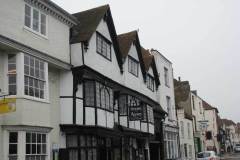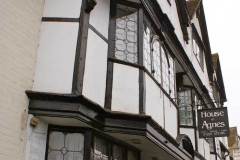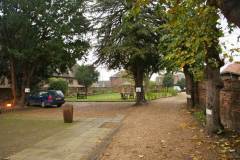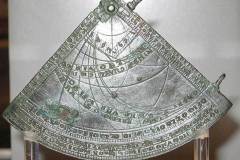71 St. Dunstan’s Street
Introduction
This building is probably the best example in a considerable number of 16th century buildings in this street. It allegedly takes it’s name from the character Agnes Wickfield, in the Charles Dickens novel David Copperfield.
History
The inn was one of a number built just outside the Westgate built during the 16th century to exploit the trade generated by visitors to the city. Those who did not arrive before the nightly curfew would have stayed here overnight. It is a three storied jettied timber framed house with three gables to the street frontage. In the late 17th century the first floor bay windows with round-headed centres were added and in the 18th century two ground floor bay windows. An archeological investigation associated with renovations in 2005 unearthed a late 14th century navigational instrument called an astrolabe. It became known as the ‘Canterbury Quadrant’ and is now on display at the British Museum in London, one of only eight in the world and the only one to be definitely to be made in England.
What to see:
- The view from the St. Dunstan’s Street (Image 1).
- The 17th and 18th century bay windows and corbels (Image2).
- The rear walled garden, probably the largest in Canterbury (Image 3).
- The Canterbury astrolabe, to be seen only at the British Museum (Image 4).
Access: The building can be viewed from the street at any time, but internal access is limited to guests of the inn.
Sources: Cantacuzino (1970):
http://www.britishlistedbuildings.co.uk/en-441124-house-of-agnes-hotel-71-canterbury
SR




